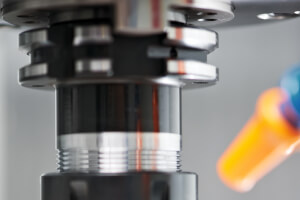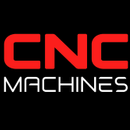Understanding and Eliminating Machining Vibrations: 9 Effective Strategies

Understanding and Eliminating Machining Vibrations: 9 Effective Strategies
Introduction
Machining vibrations, also known as chatter, are a common issue in manufacturing that can lead to poor surface finish, reduced tool life, and decreased productivity. These vibrations occur when the cutting tool or the workpiece oscillates during the machining process. Understanding the causes and implementing effective strategies to eliminate these vibrations is crucial for achieving optimal machining performance. This article explores the nature of machining vibrations and outlines nine actionable steps to mitigate them.
The Nature of Machining Vibrations
Machining vibrations can be categorized into two main types: forced vibrations and self-excited vibrations (chatter). Forced vibrations are caused by external sources such as unbalanced equipment or environmental factors. Self-excited vibrations, or chatter, arise from the interaction between the cutting tool and the workpiece, creating a feedback loop that amplifies oscillations.
9 Strategies to Eliminate Machining Vibrations
1. Optimize Cutting Parameters
Adjusting cutting parameters such as speed, feed rate, and depth of cut can significantly reduce vibrations. Lowering the cutting speed or feed rate may help to stabilize the cutting process and minimize chatter. For instance, reducing the depth of cut can lessen the force exerted on the tool, thereby decreasing the likelihood of vibrations.
2. Use Sharp and Well-Maintained Tools
Dull or worn-out tools are more prone to inducing vibrations. Regularly inspect and replace cutting tools to ensure they are sharp and in good condition. Sharp tools reduce the cutting forces and improve the overall stability of the machining process.
3. Improve Tool Holder and Work piece Clamping
Secure clamping of both the tool holder and the work piece is essential to minimize vibrations. Ensure that the tool holder is robust and properly balanced. Similarly, use appropriate clamping techniques and fixtures to secure the work piece, reducing any potential movement during machining.
4. Implement Damping Techniques
Damping techniques help to absorb and dissipate vibrations. One effective method is using damping materials or devices such as viscoelastic dampers or tuned mass dampers. These can be integrated into the machine structure or the tooling system to reduce the amplitude of vibrations.
5. Optimize Tool Path and Machining Strategy
The tool path and machining strategy can influence the occurrence of vibrations. Avoid sudden changes in direction or sharp corners that can induce chatter. Implementing a smooth and continuous tool path, such as using spiral or helical milling techniques, can help maintain stability.
6. Use High-Performance Tooling Systems
Advanced tooling systems designed to minimize vibrations can make a significant difference. Tools with variable helix angles, variable pitch, or harmonic dampening are specifically engineered to reduce chatter. Investing in high-performance tools can enhance machining stability and surface finish quality.
7. Maintain Machine Rigidity and Condition
Ensure that the machining equipment is in good condition and structurally rigid. Regular maintenance and calibration of the machine components, such as bearings and guides, are crucial. A well-maintained and rigid machine setup minimizes the sources of external vibrations.
8. Employ Active Vibration Control
Active vibration control systems use sensors and actuators to monitor and counteract vibrations in real-time. These systems can detect the onset of chatter and apply corrective forces to stabilize the machining process. While more sophisticated and costly, active vibration control can be highly effective in demanding applications.
9. Optimize Work piece Material and Geometry
The material and geometry of the work piece can affect its susceptibility to vibrations. Materials with higher stiffness and damping properties are less prone to chatter. Additionally, optimizing the work piece geometry, such as reducing overhangs and ensuring uniform wall thickness, can enhance stability during machining.
Machining vibrations are a significant challenge in the manufacturing industry, but they can be effectively managed through a combination of strategies. By optimizing cutting parameters, using sharp tools, improving clamping, implementing damping techniques, and employing advanced tooling systems, manufacturers can significantly reduce vibrations and enhance machining performance. Regular maintenance and the use of active vibration control systems further contribute to stability and precision. By addressing the root causes and applying these nine strategies, manufacturers can achieve better surface finishes, longer tool life, and increased productivity.


